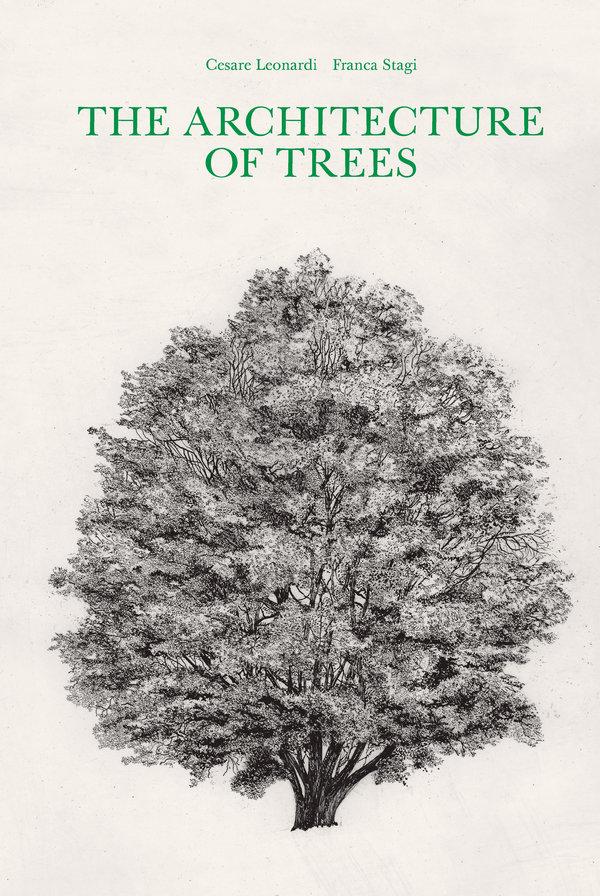
The Italian designers Cesare Leonardi and Franca Stagi, who partnered in a Modena practice from the 1960s until the ‘80s, spent their spare time obsessively sketching trees in all seasons for editions of “The Architecture of Trees” (Princeton Architectural Press, $125, 424 pp.).
The book is newly available in English, and expanded into a sumptuous format weighing six and a half pounds. It combines quill-pen outlines of leafed and leafless specimens — as varied within strict parameters as Bernd and Hilla Becher’s factory photos — with bare-boned but poetic texts. Captions and a glossary shed light on how to identify epicarps (fruit skins) and flabellate (fan-shaped) foliage. An essay by Ms. Stagi meditates on how “nature experiments in infinite ways” within the confines of trees that “grab on to the planet” and thrive only where it suits them.

Humans, prehistorically speaking, have felt most optimistic and in control under “white, clear sunlight, filtered through a canopy of leaves,” the researcher Jorn Viumdal reports in “Skogluft: Norwegian Secrets for Bringing Natural Air and Light into Your Home and Office to Dramatically Improve Health and Happiness” (Harper Design, $25.99, 288 pp.).
Mr. Viumdal explains how to create indoor substitutes for idyllic primeval woodlands (“skogluft” is a Norwegian word for “forest air”): Cover your walls and shelves with pots of golden pothos plants, which require minimal care. People living and working alongside such greenbelts have detected improved moods and productivity as well as lower levels of chemical pollutants indoors. I know, it sounds like snake plant oil. But Mr. Viumdal’s breezy prose and easy-to-follow instructions are as tempting as the book’s photos of shaggy greenery in decluttered Scandinavian rooms.

The Spanish Impressionist painter Joaquín Sorolla portrayed his clients and family members outdoors against backdrops of densely packed flowers, in a botanical take on Klimtian opulence. At Sorolla’s home in Madrid, he sketched prolifically amid rows of classical statuary and fountains and clusters of lilacs, oleanders, roses and potted geraniums. “Sorolla: Painted Gardens” (Rizzoli Electa, $50, 152 pp.), by his great-granddaughter Blanca Pons-Sorolla and the art conservator Monica Rodriguez Subirana, analyzes how he composed his canvases with man-made landscape features supporting the amorphous blooms.
Sorolla traveled widely on commission, and the book quotes his delightful letters about the scenery. He described the “harmonious music” resulting from “cupfuls and spoutings” of fountains in Granada, and he regretted leaving Seville as blossoms worth painting emerged on “such a beautiful rosebush that I wished I could eat it.”

Flowers resist anyone’s efforts to make them peak at the perfect time. Resourcefulness about what’s ready or wilting is the subject of the visual survey “Blooms: Contemporary Floral Design” (Phaidon, $49.95, 272 pp.). Thumbnail biographies and photo portfolios for more than 80 florists worldwide cover the bouquet gamut, including BRRCH’s pampered pale blue orchids being licked by rapper Princess Nokia and Pot + Box’s dying pink tulips pinned to walls in an abandoned home in Detroit.
Harriet Parry fashions pink corsages that fit on dolls’ wrists, and Cecilia Fox covers ceilings with clouds of gypsophila. Blooms are juxtaposed with cannabis leaves and neon strips, and waxy red anthuriums make excellent headgear. The book’s texts about the “journey with flowers” can be cloying, but are rich in plant names like ninebark, quaking grass, chocolate cosmos and cow soapwort.
Now seize the day to take your reading materials, made from pulped trees that gave us breath, to someplace outside where the skogluft is fresh.







